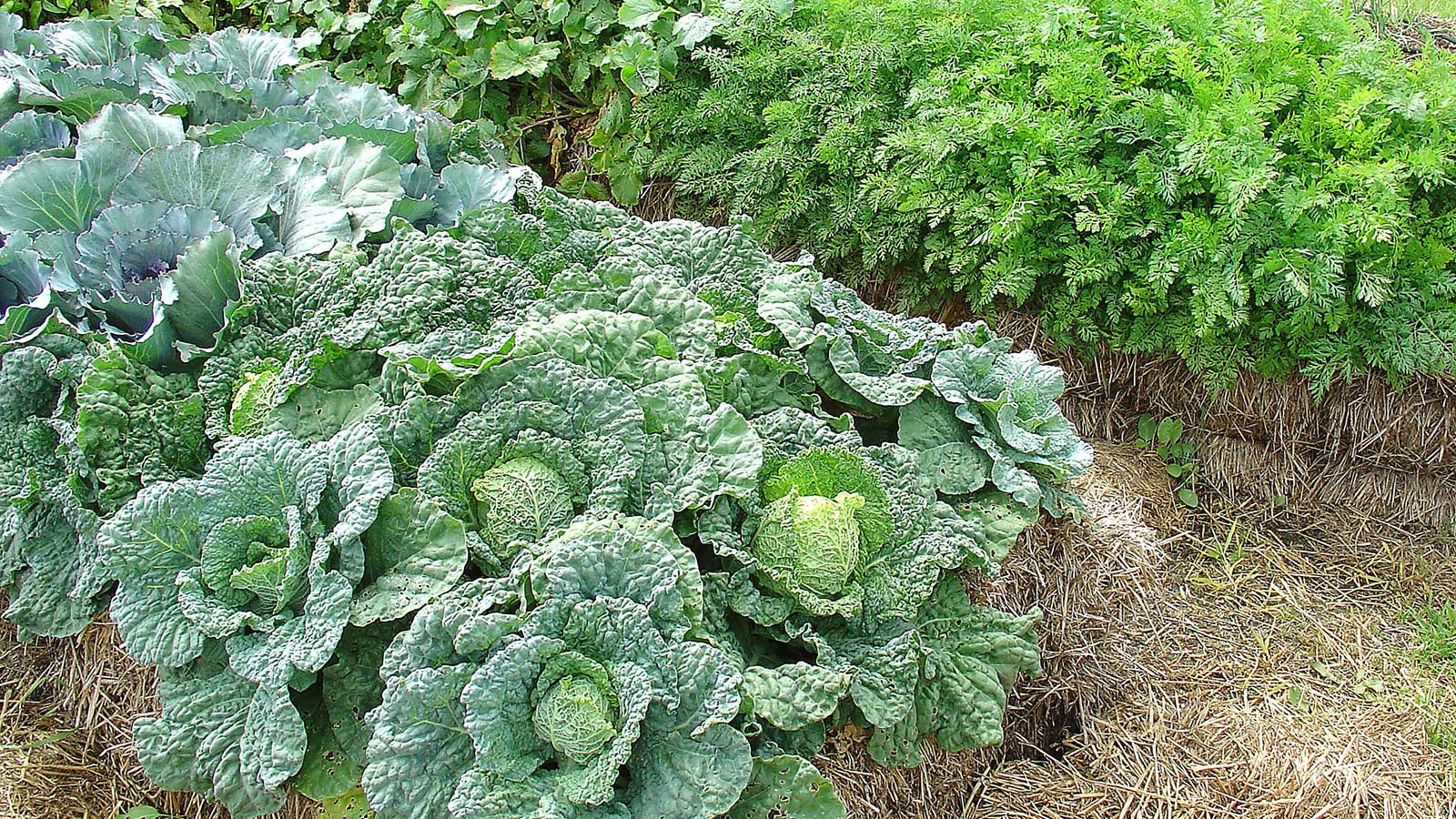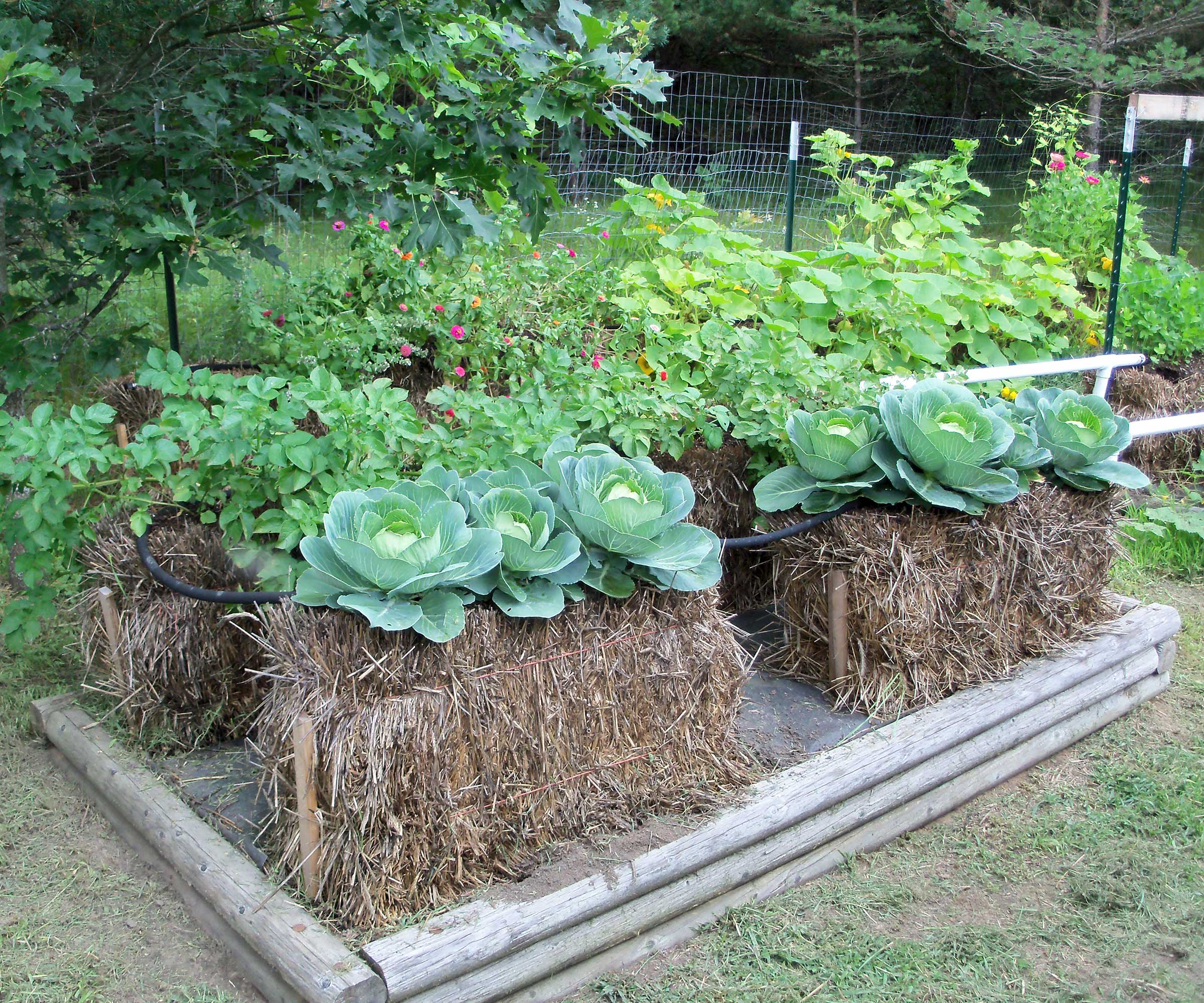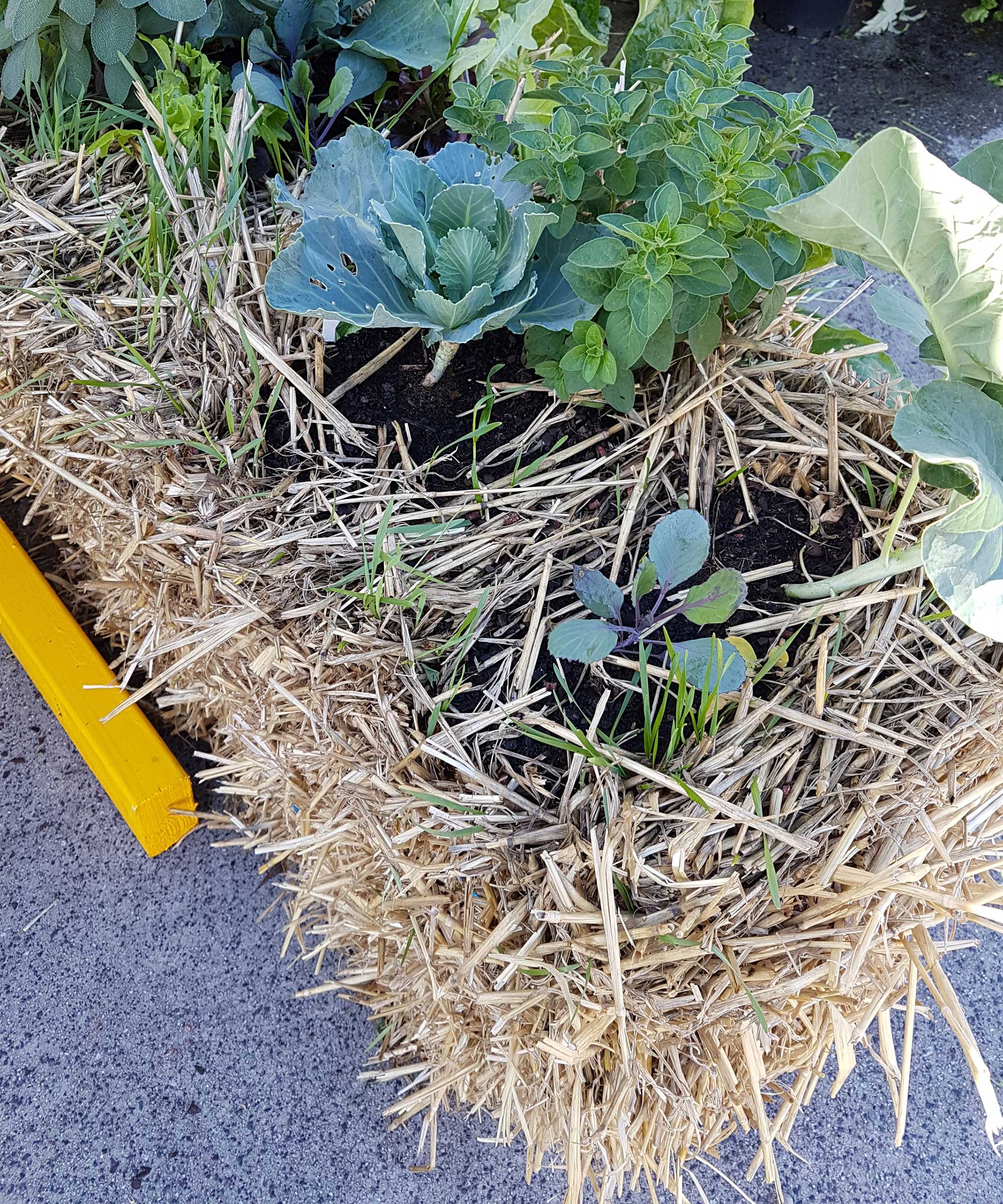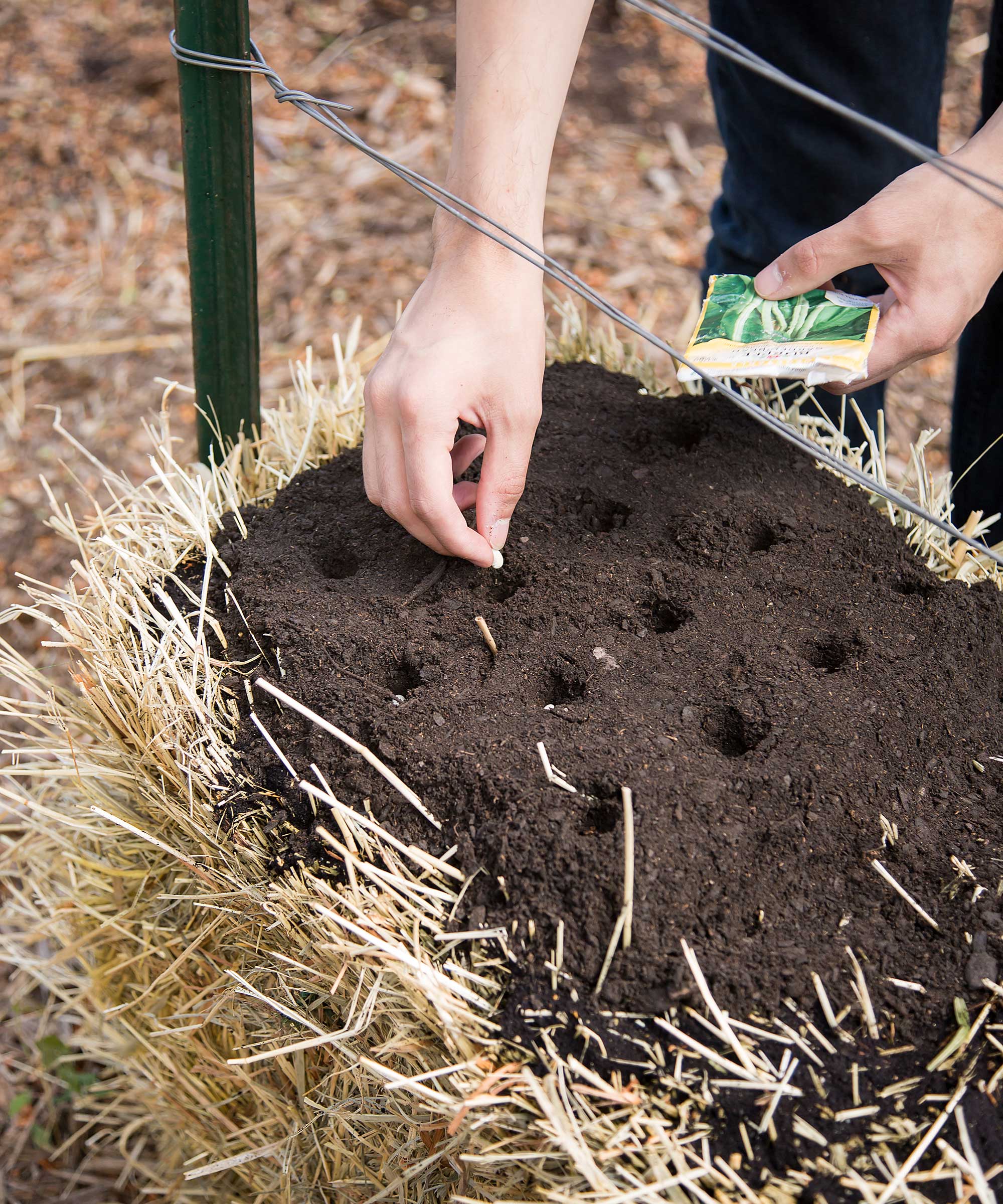What is straw bale gardening? Experts explain this alternative growing method
Discover the benefits of this gardening approach, plus how to get started and the problems to look out for


When thinking about growing crops and flowers at home, planting into bales of decomposing straw probably isn't the first approach that springs to mind. But, the concept offers a huge amount of benefits – and has gained popularity across multiple countries as a result.
It may seem like a novel way of starting a vegetable garden. And Joel Karsten, the pioneer of the Straw Bale Gardens® method, says that, 32 years ago, nobody had ever heard of such a thing.
But now, five books and nearly 3,000 live presentations later – and with the help of social media – more than a million people have adopted the method.

Many plants can be grown using this technique, including tomatoes

Thirty years ago, Joel Karsten, a horticulturist from the University of MN, pioneered a unique method for growing vegetables in bales of straw. Joel has written five best-selling books on the subject, now translated into many languages. He has traveled extensively to spread his method worldwide, including a presentation to the United Nations and a popular TED talk. Straw bale gardening offers tangible hope for people in some of the poorest places on earth to grow their own food successfully.
A simple guide to straw bale gardening
Straw bales provide an alternative gardening medium to growing directly in the ground or a raised garden bed, as points out Mallory Micetich, a homes expert from Angi. She says it can be one of the most convenient gardening methods: 'The growing process is simple, affordable, and highly customizable.'
The benefits of straw bale gardening

Planting in straw bales is budget-friendly and doesn't require many tools
One key benefit of straw bale gardening is that it naturally provides growing plants with nutrients. This is because the inside of the bale is encouraged to quickly compost and decompose, Joel explains.
What's more, in the early stages of decomposition (also called conditioning), they get warm – even hot – inside, Joel says. They will then cool slightly to a temperature that is ideal for encouraging new seedlings to grow roots quickly. 'The heat that radiates from the bales also helps protect any tender spring plantings from any unexpected late spring frost,' he adds.
Another benefit of the technique is its affordability. A bale is usually between $4 and $10, depending on your location, Joel says. 'A typical bale is about 14 cubic feet, so in terms of cost per cubic foot of planting media, it is very cost-effective when compared to buying bagged planting media or even bulk compost.'
Design expertise in your inbox – from inspiring decorating ideas and beautiful celebrity homes to practical gardening advice and shopping round-ups.
Joel also highlights that the method works just as well with bales of hay, or in some parts of the world, bales of sugar cane stalks or corn stalks. 'Virtually any organic matter that is tightly compressed into a bale will work,' he says.
This low-cost nature makes it incredibly accessible. Joel says their reach has now gotten into many third world countries, where they are teaching the method to some of the world’s most food-insecure populations.

Just a few bales can be used to grow a successful harvest of flowers and veg
The height of straw bales also improves accessibility for those who are less mobile, particularly in comparison to gardening in the ground.
Then there's the advantage of fewer weeds, as well as fewer issues with soil-borne insects and diseases. 'Because we are not using the same soil year after year, those insects and diseases that tend to overwinter and harbor in soil are less troublesome,' Joel explains.
Getting started with straw bale gardening

Weeds are often easier to deal with when gardening in straw bales
The easiest way to get started is to acquire four or six bales of straw or hay or make your own bales of highly-compressed, organic material using a simple DIY method, says Joel. 'We have several videos to detail this method on our StrawBaleGardenClub.com website.'
When dry, the bales will be fairly lightweight and easy to transport to your garden, says Rebecca Sears of Ferry-Morse. 'Be sure to place your bales in a sunny spot and arrange them in a layout that’s suitable for your needs and goals, as they’ll become heavy once planted and watered.'
For the first two weeks, apply a high nitrogen organic or non-organic fertilizer to condition the bales, Joel instructs. 'This nitrogen feeds the bacteria. Keep the bales moist, which will encourage the bacteria to colonize and decompose the straw.
'The bales will heat up and then in two to three weeks, they will cool down. At this point, they are ready to plant with seeds or starter transplants.'
For transplants, you can simply make a hole in the bale using your hands or a trowel (such as this well-rated one from Fiskars at Amazon), and push the plants in. Add a little potting mix around the top of the plants, then water them. For seeds, make a seed bed by applying a layer of potting mix to the top of the bales, then sow into this and water them in.
Once planted, water your plants every few days or when the plants show signs of wilt, Joel says.
Top tip: Joel suggests adding a trellis over the top of your straw bales to support vining crops and to make the garden more vertical.

As CMO and Resident Green Thumb for the Green Garden family of brands, Rebecca Sears nurtures the company's heritage but also looks to develop new products and solutions to help gardeners of all skill levels fuel their passion and become more successful in the garden. Rebecca has been gardening from coast to coast, first realizing her passion while living in Portland, Oregon, inspired by the public gardens throughout the city. When she relocated to the northeast, she built upon her knowledge and craft, and now her backyard garden grows larger each year.

You can create seed beds on the tops of the bales
FAQs
What can you grow in straw bales?
'Zucchini, tomatoes, and basil are just a few edible plants that can grow well in a straw bale garden,' says gardening expert Rebecca Sears. 'Marigolds and petunias can also be grown in straw bales if you want to add some bright pops of color.
'As you’re preparing your straw bale garden, be sure to confirm your chosen plants will grow successfully in your gardening zone, which can be determined by the recently updated USDA plant hardiness zone map,' she adds.
What are the most common problems with straw bale gardening?
'Slugs can still be an issue in a straw bale garden,' warns Joel Karsten, author and pioneer of the Straw Bale Gardens® method. There are lots of ways to get rid of these pests, such as putting out beer traps.
Another issue can be the bales slumping down as they continue to decompose over the season. If the bales begin to tip, push them upright, and use a wooden stake to brace them until they settle on the opposite side, Joel advises.
Can you use the same straw bales for more than one season?
The bales can be used for a second season, says Joel Karsten author and pioneer of the Straw Bale Gardens® method. However, he suggests surrounding them with a length of chicken wire, and adding the remains of a second bale on top of the first one.
'This results in a compacted bed of straw as deep as a new bale but already partially decomposed,' he explains. 'This second season "bale" works well for root crops, cool season crops, or other crops that can be planted early, as these second-year bales do not require the conditioning – they are ready to plant early in the spring.'
Older bales can become less attractive in the garden, but planting a row of annual flowers around the sides can provide a skirt of color for the whole season, he adds. 'In addition, they will help attract pollinators.'
Whether you want to grow some beautiful annual blooms or some easy veg, why not give straw bale gardening a go in your own backyard? You can always start with just a couple of bales to see if it works for you – but it's likely you'll soon be converted to this fuss-free method.

Holly started writing about gardening five years ago, and she is a regular contributor to Homes & Gardens. She has also written many gardening features for Woman & Home and Real Homes, too. She has previous experience as a professional gardener, where she helped to plant and maintain private gardens. Holly has also looked after allotment plots over the years and loves to grow her own flowers and veggies from seed. In her spare time, she enjoys visiting local gardens, botanical drawing, and tending to her ever-growing collection of houseplants.